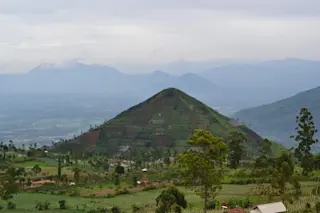
Early human ancestors spent eons testing their skeletons while jogging through untamed landscapes hunting and gathering food to survive. Life is significantly easier today, and evidence of a more leisurely lifestyle is showing up in our rested bones. Since the invention of agriculture, new research shows, human bones have grown lighter and far less dense than those of early humans and closely related primates. Researchers believe sedentary lifestyles — made possible by agriculture and technology — are the root cause of human bone degradation over the past 1,000 years. Their findings reinforce the idea that exercise, not diet, is key to preventing fractures and osteoporosis.
Thin Bones
Researchers in two different studies X-rayed samples of human bones from various points in the archaeological record, as well as bones from various modern primate species. In both studies, researchers were most interested in trabecular bone, which is the sponge-like internal structure of bones that gives them added strength. Trabecular bone is of particular interest because it can change its shape and structure depending on the loads that are imposed on it. Basically, more load stress yields higher bone density and fewer air pockets in spongy trabecular bone. The more we exercise in life the stronger our bones grow, until they hit peak strength around the age of 30. After that, the aging process degrades our bones.
A New Development
Researchers found that early hunter-gatherers had far denser trabecular bone than modern humans, and that the decrease in bone density was more pronounced in lower limbs than in upper limbs, suggesting a link between bone density and changes in mobility. The density of 7,000-year-old hunter-gatherers’ bones was 20 percent higher than 700-year-old farmers’. Go back 150,000 years, and hominids’ bones were even denser. What's more, the evidence suggests the shift from thick-boned hunters to frail modern man happened relatively recently and rapidly in terms of evolutionary timelines. Researchers believe human bone density will continue to decline at an accelerated rate as technology continues to make life less laborious on our bodies. Researchers published their findings Monday in the journal Proceedings of the National Academies of Science (study one, study two).
Digging Through Bones
Although researchers found a link between lifestyles and bone density, there are still plenty of questions to answer. Trabecular bone architecture can vary in several ways including its shape, thickness and spacing. The current study didn’t account for all of these parameters, which could affect strength. And if lack of activity means flimsier bones, researchers want to see if the obverse is true. The team plans to study the bones of modern super-marathon runners to see if they're more closely similar to those of human ancestors.
Photo credit: Sebastian Kaulitzki/Shutterstock













